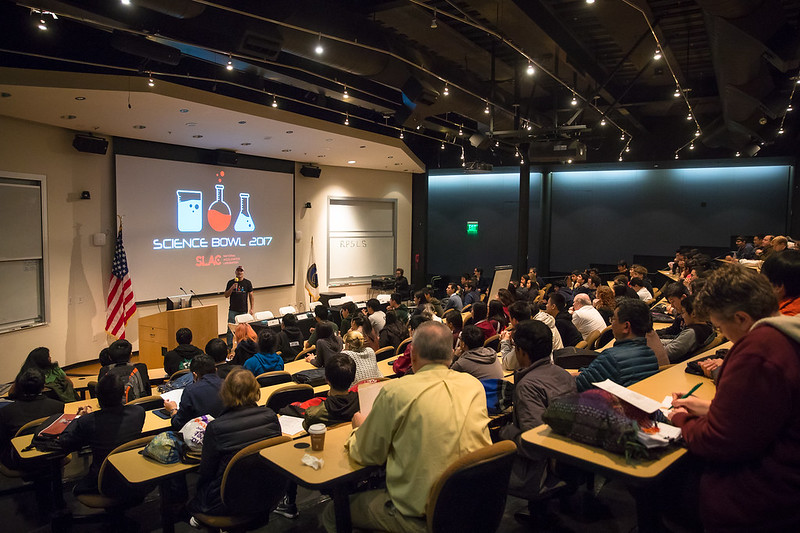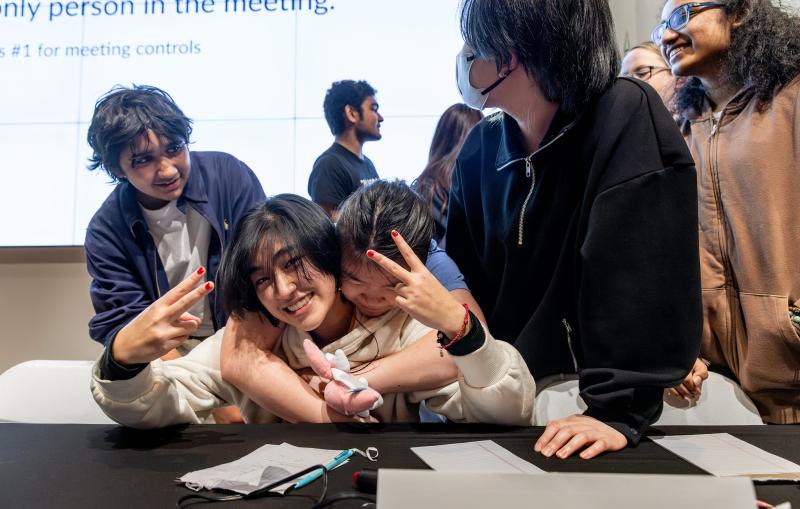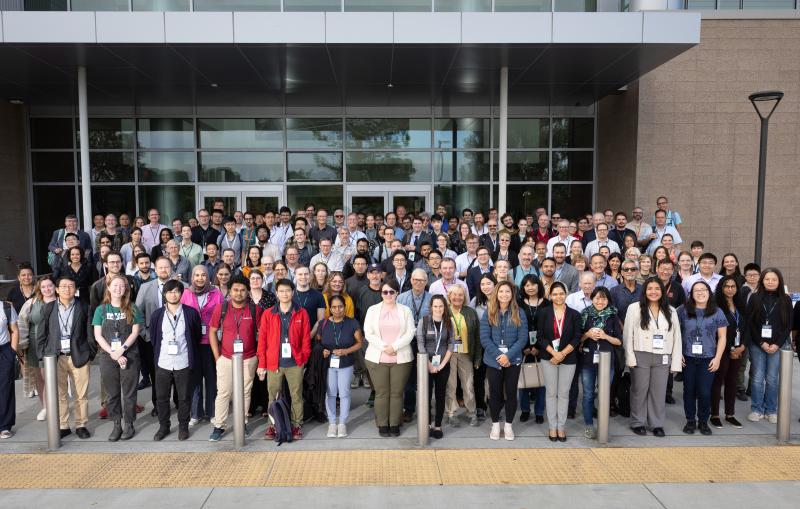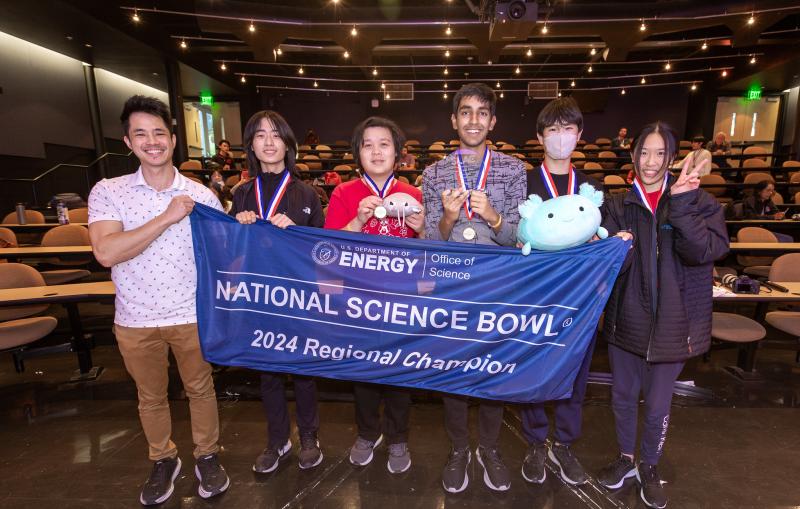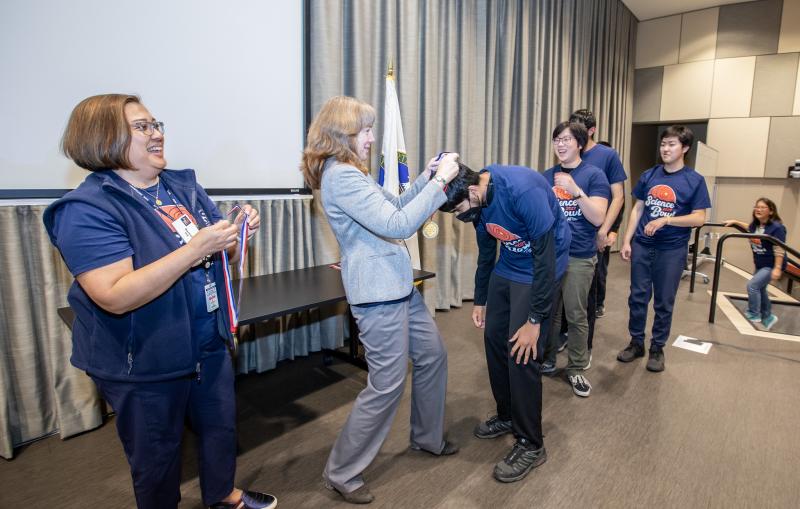Harker School Wins 2017 SLAC Regional Science Bowl Competition
After losing its first match of the day to the defending champions, The Harker School’s team won 10 consecutive rounds to claim victory in the annual SLAC Regional DOE Science Bowl.
After losing its first match of the day to the defending champions, The Harker School’s team won 10 consecutive rounds to claim victory in the annual SLAC Regional DOE Science Bowl on Saturday, Feb. 11.
In making the longest possible comeback in the all-day round-robin and double-elimination science quiz contest, the Harker team overcame a tough draw and avenged final-match losses to Lynbrook High School in the last two SLAC Regionals.
A random draw placed the 24 teams from 21 area high schools into four groups of six teams. Teams first played their group opponents in five round-robin matches. The top two teams from each group advanced to afternoon elimination rounds. The first-place teams exited after two afternoon losses, while just one loss ousted the groups’ second-place teams.
During the draw, which was held in Kavli Auditorium before the competition started, the crowd of contestants, coaches and parents gasped as the region’s four historically strongest teams – Lynbrook, Harker, Homestead and Palo Alto -- all ended up in the same group. Collectively, the four schools had won 11 and placed second in eight of the past 12 SLAC regionals. Due to their grouping, it was certain that at least two of them would not qualify for the afternoon matches this year.
Rules of the Game
In the competition, pairs of four-student teams face off in a series of fast-paced question-and-answer matches that test knowledge in biology, chemistry, physics, earth and space sciences, energy and math.
A moderator reads a tossup question, worth four points, that can be answered by the contestant who buzzes in first. If that answer is correct, the contestant's team can then collaborate on a 10-point bonus question, which must be answered in just 20 seconds. If a tossup answer is wrong, the other team can try to answer it. Contestants who buzz in before the moderator finishes reading a tossup and answer incorrectly incur a 4-point “interrupt” penalty. The winning team has the most points after two 8-minute halves or after 23 tossup questions have been asked.
Questions cover an extremely wide range of detailed scientific information, including, for example, optical properties of materials, trigonometric calculations, biological reactions and DOE national laboratory research programs. DOE provides eight complete sets of practice questions that teams can use in their preparations.
Harker Comes From Behind
After losing to Lynbrook in its very first match of the day, Harker essentially faced elimination in each of its remaining contests. Harker won the rest of its morning matches to place second in its group and then rolled through the knockout rounds, beating Palo Alto’s second team, 140-56, to set up the final contests with undefeated Lynbrook.
Harker romped in the first afternoon match between the two, 116-36, as Lynbrook had four interrupt penalties in the first half and answered no bonus questions correctly. The championship match was much closer and came down to the last question, a math problem involving a dot product. Harker prevailed, 108-94.
“The last two years, we were undefeated through the morning rounds and got a bit complacent in the afternoons,” said Harker’s captain Venkat Sankar. “This year we aimed to be more cohesive, practiced more and kept our spirits up no matter what happened. We didn’t dwell on any negatives.”
He added, “We also knew that Lynbrook was very fast buzzing in, so we practiced being more conservative.”
“We are still really fast in math,” said Swapnil Garg, who was the 2014 National MATHCOUNTS champion as an eighth-grader.
With its win, Harker’s team qualifies for the National Science Bowl competition, which will be held April 27-May 1 in Washington, D.C. Since winning the SLAC Regional in 2006, Harker had finished second six times (2007, 2009, 2010, 2013, 2015 and 2016).
SLAC Regional Milestones
The U.S. Department of Energy created the National Science Bowl in 1991 to help stimulate interest in science and mathematics. This year, more than 9,000 high school and 4,500 middle school students will compete in 116 high-school and middle-school Science Bowl regionals.
“In its formative years, we thought this would be a way to pique interest in science and math,” said Ray Ng, who has helped organize local Science Bowl competitions since 1992, when he was education outreach coordinator at Sandia National Laboratories’ California campus in Livermore. “I think it has done that,” he said. “It continues to grow, and alumni return to volunteer.”
SLAC Outreach Events Manager Rachel Isip said some 65 volunteers served as match moderators, scorekeepers, timekeepers and science judges at the SLAC regional. Many were SLAC employees or Stanford students who had competed in Science Bowls when they were in high school.
While all the high schools competing in the SLAC Regional are located in San Francisco, the Peninsula and South Bay areas, the Stanford Online High School’s two Science Bowl teams included students who live in Rhode Island, South Carolina and Texas, in addition to the Bay Area. “They met in person for the first time yesterday at our all-day practice session,” said coach Kim Failor.
This year’s SLAC regional was the last for Homestead’s long-time coach Chris Nafrada, who is retiring from Science Bowl coaching after 15 years. His teams won five SLAC regionals (2007, 2008, 2009, 2011 and 2014) and three times placed in the top 12 of the National Science Bowl.
For questions or comments, contact the SLAC Office of Communications at communications@slac.stanford.edu.
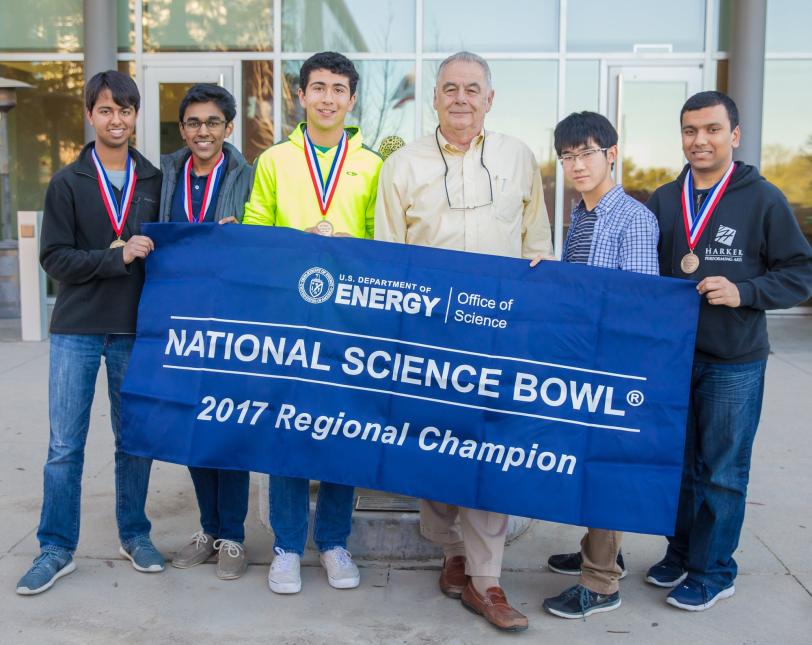
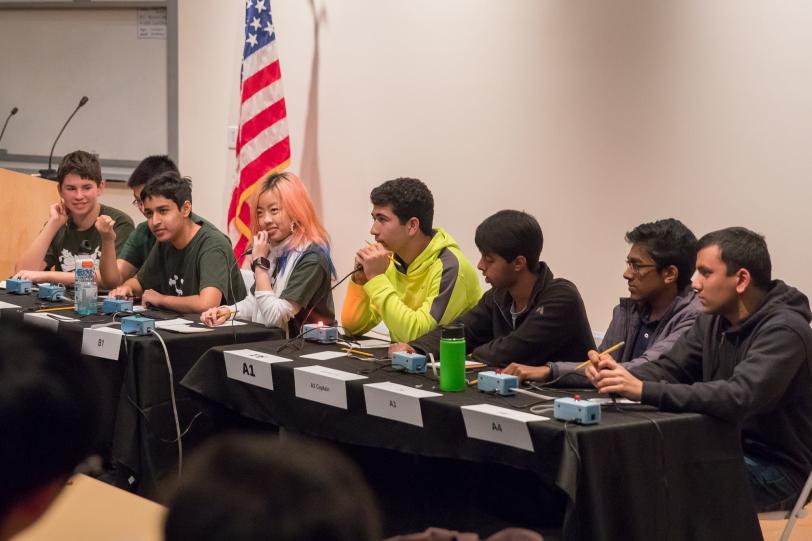
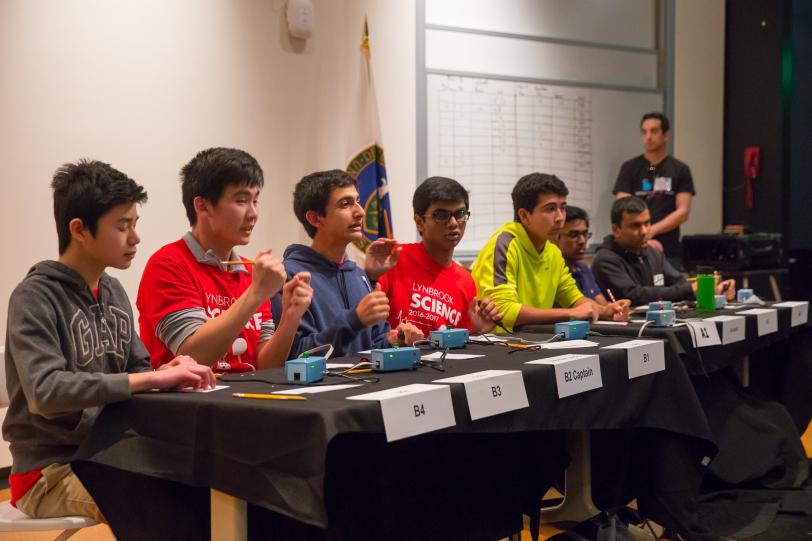
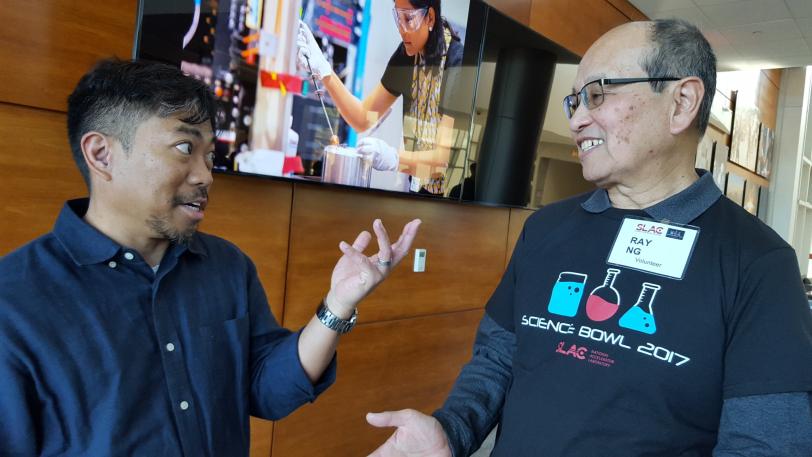
About SLAC
SLAC National Accelerator Laboratory explores how the universe works at the biggest, smallest and fastest scales and invents powerful tools used by researchers around the globe. As world leaders in ultrafast science and bold explorers of the physics of the universe, we forge new ground in understanding our origins and building a healthier and more sustainable future. Our discovery and innovation help develop new materials and chemical processes and open unprecedented views of the cosmos and life’s most delicate machinery. Building on more than 60 years of visionary research, we help shape the future by advancing areas such as quantum technology, scientific computing and the development of next-generation accelerators.
SLAC is operated by Stanford University for the U.S. Department of Energy’s Office of Science. The Office of Science is the single largest supporter of basic research in the physical sciences in the United States and is working to address some of the most pressing challenges of our time.
